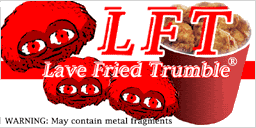I've broken the UV mapping on the Seraphim up into groups that are on a fairly similar plane and have logical mapping breaks, or unwrapped them if they need to be contiguous (in the case of cylinders for example).

I apply a small (64x64) chequered texture to the model and then scale the individual UV groups until the chequers on the model are approximately the same size. This ensures that each group is more or less to scale and recieving it's fair share of pixels on the texture map.
[img]http://s31.photobucket%20.com/albums/c362/waynepeters/th_texture_layout.jpg[/img]
Note that only two of the six wings are textured and only one of the pilots. This is because I only need to map one of the large wings and one of the small wings. I can then mirror them to replace the other wings, as the ambient lighting and textures on them will be virtually identical. Equally, I only need to texture one pilot and duplicate him. The ambient lighting on the pilots would be slightly different, but not enough to warrant using up valuable texture space for a second pilot texture. I've done a similar thing with the lugs around the afterburner too which you can see in a later picture.
If there was going to be a signifigant difference in ambient lighting on the parts then it would be worth mapping them individually or it starts to look broken.
Once all my UV groups are to scale then I start to lay them out into a square, maximising the space used so that the texture on each part is as high res as possible and that there are as few pixels as possible loaded into memory that are not actually being used.
There are software plugins that will do this automatically for you, but I prefer to do it myself. I don't trust software to do it intelligently enough and it also means that I know exactly what each piece is and where it is. It can also be quite satisfying and theraputic - a bit like doing a jigsaw.
[img]http://s31.photobucket.com%20/albums/c362/waynepeters/th_UVs_Square.jpg[/img]
The two areas I've marked with an X are duplicated polys on the front of the big wing. This is so that I can mirror the big wing and still have the word 'POLICE' the right way round by swapping the mapping on the mirrored wing for this texture area.
Once this is done, I run an ambient occlusion pass. This is a groovy plugin for Maya that generates a texture based on the UV layout I've made, that has dark areas in recesses and light areas on exposed surfaces. This will form the basis of my texture and will provide subtle lighting variations that even the best real-time renderer cannot accomplish. Something else this does is provide faked in smoothing so if, like oolite, smoothing groups are not supported, there will be faked hard and smooth edges on the texture instead. It's not perfect (especially when combined with specularity) but it's better than nothing.
I usually work at 1024x1024 and then resize the final texture image.
[img]http://s31.photo%20bucket.com/albums/c362/waynepeters/th_Seraphim_Ambient_scr.jpg[/img]

Crow






